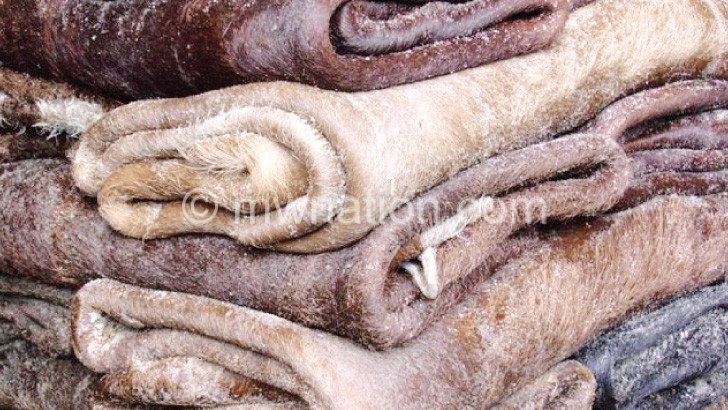Leather industry sees output jump
Leather Industries Association of Malawi (Liama), an umbrella organisation for leather processing firms, has set a production target of over 52 000 pairs of shoes a year in 2018.
This follows the purchase of a leather design studio by the European Union (EU) through the Ministry of Industry, Trade and Tourism.

The development comes at a time research by the Small and Medium Enterprise Development Institute (Smedi) shows that the leather industry loses about K5 billion annually due to lack of capacity to add value to products.
In an interview on Monday, Liama board chairperson Edward Malunga said they are failing to produce more than 1 000 pairs of shoes a week, a situation he says is hindering exports as they cannot meet the local market demand.
He said with the coming in of the design studio, they will boost their manufacturing capacity to satisfy the export market.
“We were failing to go into exportation as the production itself was minimal. If you look at the balance of payment, the current production is small and if we do a lot of exportation we fear there would be a lot of importation as people would not find our products on the market.
“Our aim has always been to ensure that there is import substitution, but with the studio we will maximise on production so much that there will be surplus for export which will be good for the country’s economy,” said Malunga.
In an earlier interview, Smedi acting chief executive officer Richard Zidana said the studio will address the gap in the leather market as those with raw materials such as animal skins will add value to their products before exporting them.
Despite a good turnover of hides and skins annually, Malawi lacks the capacity to process its raw materials in the absence of a tannery—a place where hides and skins are processed into leather—but resort to exporting raw materials and get them back as imported leather.
As a result of this, the country loses about K70 billion in import costs, according to a recent study by Smedi.
This means that jobs that could have been created in the industry value chain are also being exported to Zambia, Zimbabwe and South Africa where leather products are imported.
The Liwonde Tannery, which used to be vibrant years ago, downsized its operations and only concentrates on producing wet-blue goat skins for export and further processing.
The industry has been failing to buy equipment which costs about $1.5 million (about K1 billion), according to Liama.





